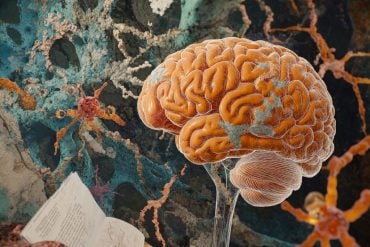Summary: A new study reports high cholesterol may contribute to the risk of developing ALS. The findings suggest cholesterol lowering drugs, such as statins, could help to prevent the onsite of the neurodegenerative disease.
Source: Queen Mary University London.
High cholesterol has been found to be a possible risk factor for the development of motor neuron disease (MND), according to a large study of genetic data led in the UK by Queen Mary University of London, in collaboration with the National Institutes of Health in the USA.
The results suggest that cholesterol-lowering drugs, such as statins, could be used to prevent the onset of MND, if confirmed in clinical trials.
Dr Alastair Noyce from Queen Mary University of London said: “This is the largest study to-date looking at causal risk factors for motor neuron disease and we saw that higher levels of LDL cholesterol were causally linked with a greater risk of the disease.
“We have well-established drugs that can lower cholesterol and we should look into whether they could protect against this terrible disease, which currently has no cure.
“The next steps will include studying whether lowering levels of cholesterol might have a protective effect against MND, and potentially evaluating the use of cholesterol-modifying drugs in people at risk of MND.”
MND or Amyotrophic lateral sclerosis (ALS) is a fatal neurodegenerative disease for which there is no cure. The condition affects the brain and nerves, with early symptoms including weakness, slurred speech, difficulty swallowing food, muscle cramps and twitches. Some people also experience changes to their thinking and behaviour.
The condition is more likely to affect people over 50, and most patients succumb to the disease within two to five years of symptom onset. It affects up to 5,000 adults in the UK at any one time, and the global prevalence is projected to nearly double by 2040, primarily due to ageing of the global population.
Published in the journal Annals of Neurology, the team searched genetic datasets of around 25 million people (including more than 337,000 people from the UK Biobank) to find risk factors for developing ALS.

While the datasets did not contain data on individuals’ actual cholesterol levels, the team studied genetic markers that are linked to cholesterol levels, and are more likely to suggest a causal link with risk of MND rather than simply associations, which are usually reported from observational studies. A randomised control trial would be the definitive proof to confirm any causal link and the ability of statins to prevent MND.
In addition to the causal effect of high cholesterol, they also found genetic associations with smoking behaviour and lower levels of educational achievement, and an increased risk of ALS. While low levels of exercise were associated with a protective effect, more aggressive exercise was associated with increased risk. However, of these findings, only high cholesterol emerged as a clear modifiable factor that could be targeted to reduce risk of MND.
Funding: The research was carried out at Queen Mary’s Preventive Neurology Unit, which has been funded by Barts Charity. This work was supported in part by NIA grant Z01-AG000949-02
The study is limited in that the data are focused on European populations, so the findings may not apply beyond those populations.
Source: Joel Winston – Queen Mary University London
Publisher: Organized by NeuroscienceNews.com.
Image Source: NeuroscienceNews.com image is adapted from the QMUL news release.
Original Research: Abstract for “Shared polygenic risk and causal inferences in amyotrophic lateral sclerosis” by Sara Bandres‐Ciga PhD, Alastair J. Noyce MD, PhD, Gibran Hemani PhD, Aude Nicolas PhD, Andrea Calvo MD, Gabriele Mora MD, The ITALSGEN Consortium, The International ALS Genomics Consortium, Pentti J. Tienari MD, David J. Stone PhD, Mike A. Nalls PhD, Andrew B. Singleton PhD, Adriano Chiò MD, and Bryan J. Traynor MD, PhD in Annals of Neurology. Published February 5 2019.
doi:10.1002/ana.25431
[cbtabs][cbtab title=”MLA”]Queen Mary University London”Statins Could Protect Against ALS.” NeuroscienceNews. NeuroscienceNews, 15 February 2019.
<https://neurosciencenews.com/statins-mnd-10751/>.[/cbtab][cbtab title=”APA”]Queen Mary University London(2019, February 15). Statins Could Protect Against ALS. NeuroscienceNews. Retrieved February 15, 2019 from https://neurosciencenews.com/statins-mnd-10751/[/cbtab][cbtab title=”Chicago”]Queen Mary University London”Statins Could Protect Against ALS.” https://neurosciencenews.com/statins-mnd-10751/ (accessed February 15, 2019).[/cbtab][/cbtabs]
Abstract
Shared polygenic risk and causal inferences in amyotrophic lateral sclerosis
Objective
To identify shared polygenic risk and causal associations in amyotrophic lateral sclerosis (ALS).
Methods
Linkage disequilibrium score regression and Mendelian randomization were applied in a large‐scale, data‐driven manner to explore genetic correlations and causal relationships between > 700 phenotypic traits and ALS. Exposures consisted of publicly available genome‐wide association studies (GWASes) summary statistics from MR Base and LD‐hub. The outcome data came from the recently published ALS GWAS involving 20,806 cases and 59,804 controls. Multivariate analyses, genetic risk profiling and Bayesian colocalization analyses were also performed.
Results
We have shown via linkage disequilibrium score regression that ALS shares polygenic risk genetic factors with a number of traits and conditions, including positive correlations with smoking status and moderate levels of physical activity, and negative correlations with higher cognitive performance, higher educational attainment, and light levels of physical activity. Using Mendelian randomization, we found evidence that hyperlipidemia is a causal risk factor for ALS and localized putative functional signals within loci of interest.
Interpretation
Here we have developed a public resource (https://lng‐nia.shinyapps.io/mrshiny) which we hope will become a valuable tool for the ALS community, and that will be expanded and updated as new data become available. Shared polygenic risk exists between ALS and educational attainment, physical activity, smoking and tenseness/restlessness. We also found evidence that elevated LDL cholesterol is a causal risk factor for ALS. Future randomized controlled trials should be considered as a proof of causality.






